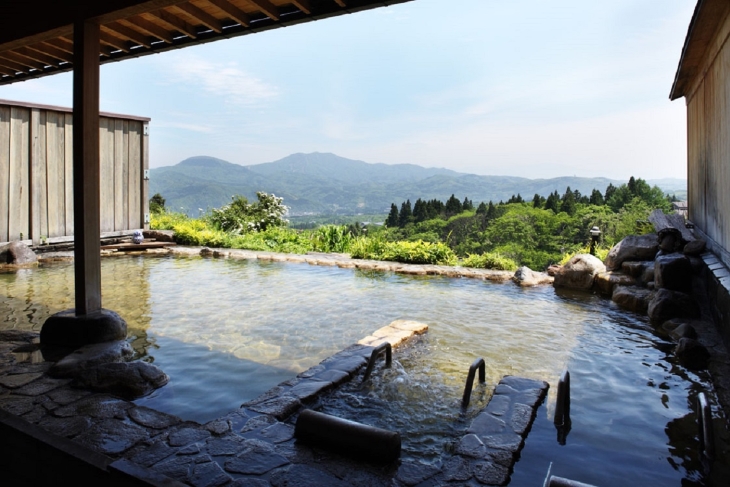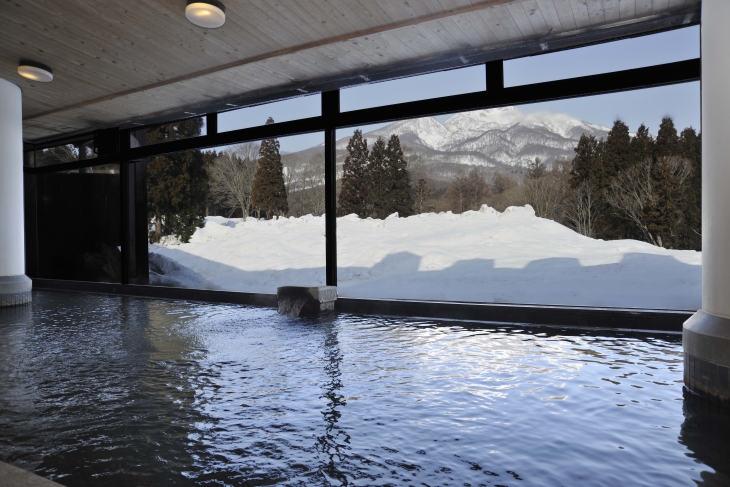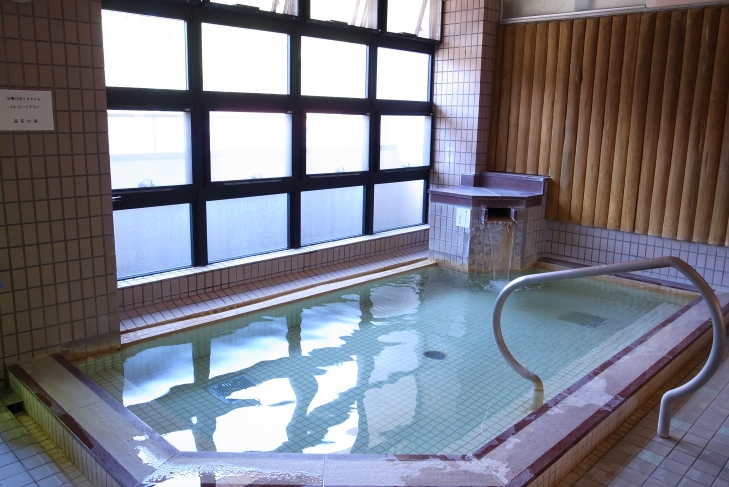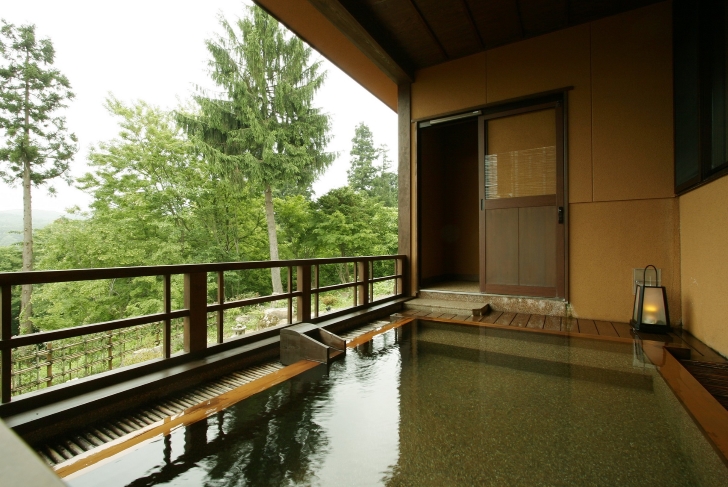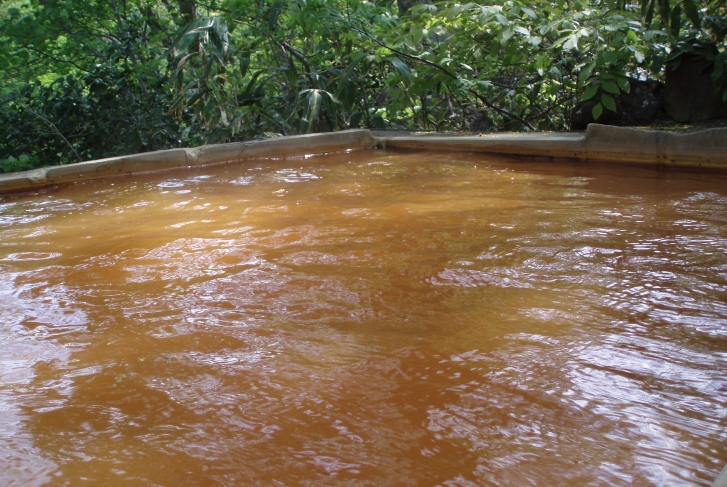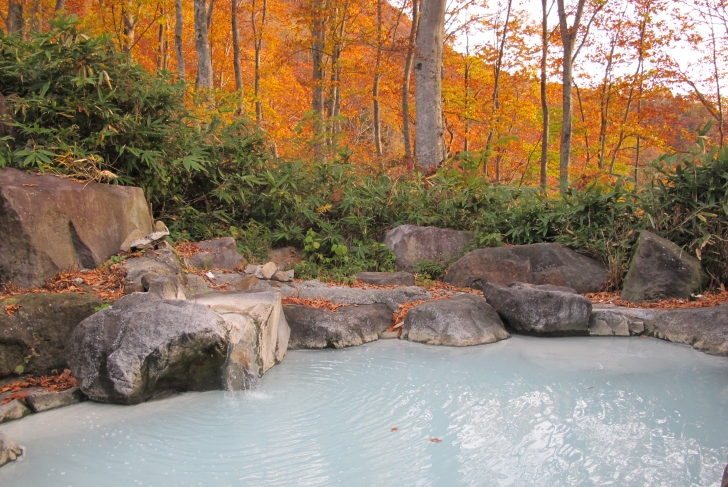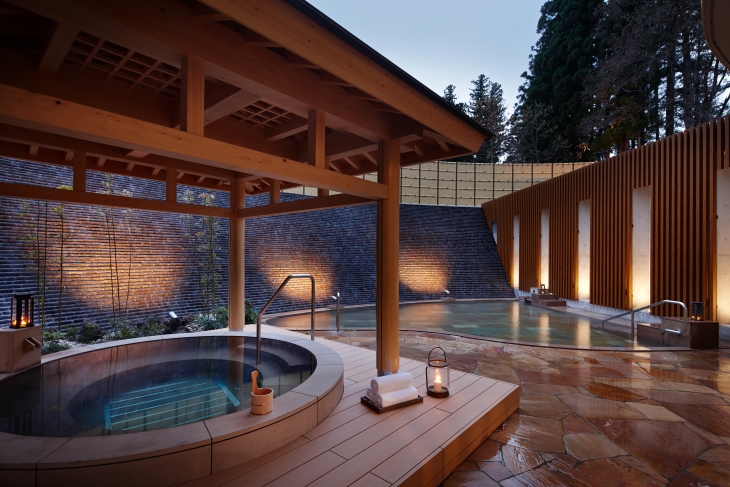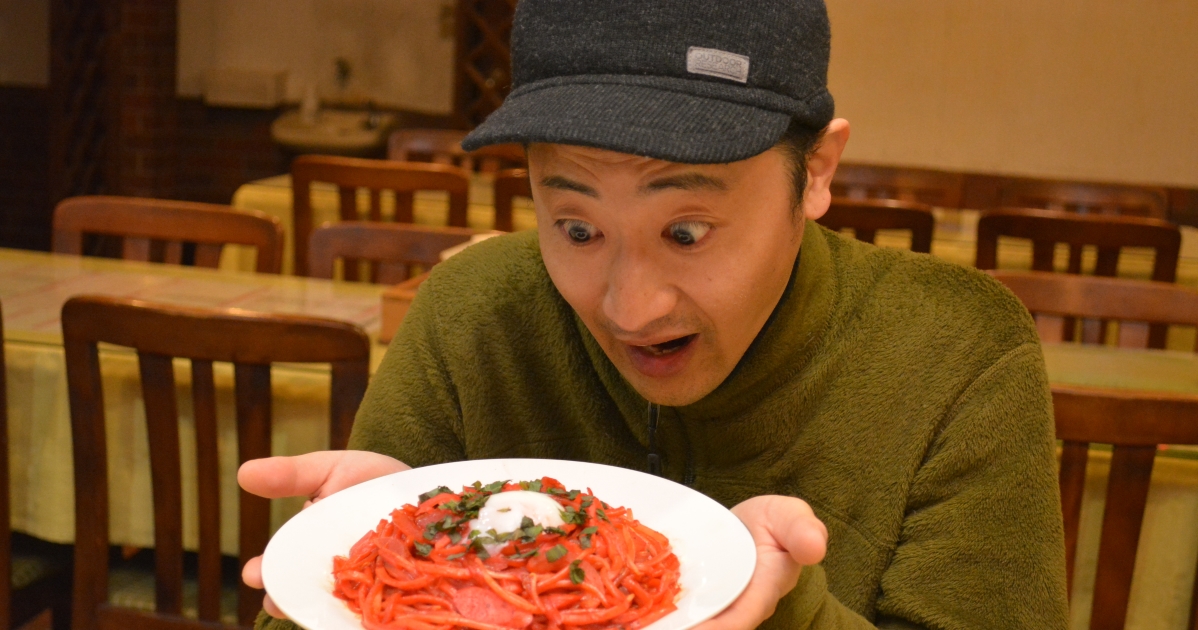A relaxing dip in one of Myoko’s hot springs after a big day on the slopes is not to be missed. Make the most of your visit and try out a few different springs to sample the different waters they offer. You’ll discover seven hot springs at the foot of Mt. Myoko: Akakura Onsen (onsen means hot spring), Shin-Akakura Onsen, Myoko Onsen, Seki Onsen, Ikenotaira Onsen, Suginosawa Onsen, and Tsubame Onsen. On top of these, there is also another hot spring that belongs to a resort. Each onsen village has hot springs for day-trip visitors as well as hot spring hotels. Make sure the place you are visiting is open in winter because Myoko has so much snow in winter that some facilities close. (Photo: Taki no Yu at Akakura Onsen *Closed in winter)
Historic hot spring: Akakura Onsen
Opened in 1816, Akakura Onsen is a hot spring with a history famous since the Edo Period (1603-1868). The hot water springing out of Kita-Jigokudani valley in Mt. Myoko is drawn to the foot of the mountain, and by the time it reaches each hot spring facility, it has fallen to just the right temperature at 42 degrees Celsius -- a great idea by wise men and women from ancient times. Akakura Onsen is also known as the origin of the program that develops "onsen sommeliers" who have basic knowledge about onsens and can give advice about how to enjoy hot springs. (Photo: Hotel Taiko)
Another famous hot spring with history: Shin-Akakura Onsen
Shin-Akakura Onsen is the hot spring area near Akakura Kanko Resort, nestled between Akakura Onsen and Ikenotaira Onsen. It features the same hot spring water as that of Akakura Onsen, and its temperature is adjusted so that the extremely hot water becomes just the right temperature by the time it pours into the tub. These are sulfate and bicarbonate hot springs, which are said to improve the skin and heal scars. (Photo: Akakura Kanko Hotel)
Ikenotaira Onsen
This hot spring has unusual, black water with dark mud, drawn from Minami Jigokudani valley half way up Mt. Myoko. It provides hot spring water to areas around Ikenotaira Onsen Ski Resort. The facilities offer different types of hot spring water. For example, Hotel Alpen Blick, which is right next to the piste, removes the dark mud by sedimentation and has clear hot water with no odor. Meanwhile, Landmark Myoko Kogen Onsen Cafe, which has a hot spring and an amusement facility, adds extra dark mud in the hot water to increase the amount of effective substances. (Photo: Landmark Myoko Kogen Onsen Cafe)
Suginosawa Onsen
The only onsen facility around Suginohara Ski resort is Naena no Yu, its name hailing from the Naena waterfall nearby. In winter the hot spring is perfect for warming your body after skiing, and in summer it refreshes you after trekking and visiting the waterfall. It is a very simple structure with only an indoor tub but is completely barrier-free. The water is nearly clear, has no odor and perfect for a moment of relaxation. (Photo: Naena no Yu)
Myoko Onsen
The water from Myoko Onsen hot spring emerges at 1,800 m above sea level, half way up Mt. Myoko. It is one of the most unusual hot springs in Japan as it draws water from there to the foot of the mountain over a distance of 10 km, through an underground pipe. By the time the 72-degree hot spring water reaches town, this smooth, soft water has cooled to about 50 degrees. You’ll find the hot spring town on the north side of Myoko Kogen Station, dotted with hotels housing their own baths as well as facilities for day visitors. (Photo: Kofukan *The outdoor bath in the photo is closed in winter)
Seki Onsen
This is a historic hot spring that is said to have been discovered by famous priest Kobo Daishi (774-835), and opened fully in 1727 during the Edo Period. The hot water that springs out from deep underground is cloudy and red with iron. The 100% natural water, which has never been diluted, heated or disinfected with chlorine, is also known as the "women's bath" because the hot water has a quality that's gentle for women. (Photo: Nakamuraya Ryokan *The outdoor bath is closed in winter)
Tsubame Onsen
Tsubame Onsen has an old town with a nostalgic atmosphere, with hot spring hotels lining the street. The water is white and cloudy. There are two outdoor baths, Kawara no Yu and Kogane no Yu, but are closed in winter because of heavy snow. Hot spring hotels each have their own unique hot springs, and some welcome day visitors. (Photo: Kogane no Yu *Closed in winter)
Lotte Arai Resort: Hoshizora Onsen
Hoshizora Onsen is a hot spring facility adjacent to Lotte Arai Resort. It's situated at the base of the ski piste where you'll see many hotels and restaurants. Surrounded by the mountains and nature, you can see the sky full of stars at night from the outdoor bath. Springing out from 1,750 m underground, the hot water is mildly alkaline with many ingredients that enhance beauty. The same facility also offers an indoor swimming pool that's open all year. These facilities are open to hotel guests and day visitors. (Photo: Hoshizora Onsen, Lotte Arai Resort)
text:Chiho Kuriyama


